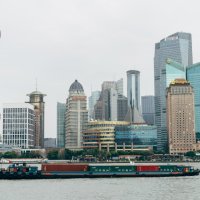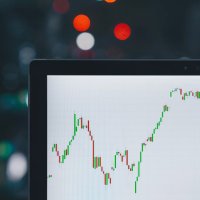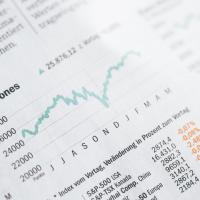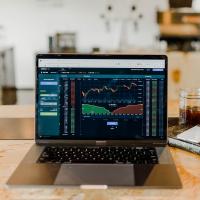Home > Investment Guide > Investing Basics
5 of the Most Well Known Incidents of Rogue Trading
While unfortunate, rogue trading does happen from time to time, and involves an employee of a bank or trading firm going alone and making trades without their employees’ knowledge - these trades can go undetected for many years, with rogue traders working to cover up their mistakes and protect their profits. However, when things do come to light, the consequences are disastrous, with cases like Nick Leeson’s leading to the breakdown of a centuries old bank. From Leeson to Yasuo Hamanaka, and including the cases of Jerome Kerviel, John Rusnak, and Kweku Adoboli, the following list represents represents some of the most well known incidents of rogue trading.
1 - Nick Leeson, 1995
Leeson’s rogue trading for Barings Bank in Singapore led to an £827 million loss that wiped out a British merchant bank that had been in operation since 1762. Leeson was an employee that had joined Barings as a low level trader, with no official access to high risk accounts - Leeson was supposed to just be making small trades that wouldn’t have an impact on the overall bank, and was based out of Barings’ Singapore office when he started performing his own trades.
Focusing on derivates and futures in Japan, Leeson started to bet on the Nikkei 225 stock index futures market, as well as on Japanese government bonds. While Leeson’s rogue trades always carried risk, everything went wrong when a Japanese earthquake saw a massive drop in Nikkei stocks - a desperate Leeson tried to keep on going, while recording false profits, but the extent of his losses for the company soon emerged. Leeson ultimately spent six and a half years in a Singapore prison, while Barings went under.
2 - Yasuo Hamanaka, 1996
Even more disastrous in terms of rogue trading was the actions of Yasuo Hamanaka for the Sumitomo Corporation in the 1990s, which eventually led to a $2.6 billion loss. Unlike Leeson, Hamanaka was a recognised trader at the Japanese corporation, where he had picked up a reputation as ‘Mr. Copper’ for his aggressive trading on the copper market. However, Hamanaka was also taking unknown risks for his employers, and accumulated losses by trying to buy up copper supplies, only to make losses on a double or nothing scheme that ultimately failed to cover a dip in the market. Yamamoto forged signatures, and created falsified accounts, for which he served seven years in prison.
3 - Jerome Kerviel, 2006-2008
This French trader lost approximately 4.9 billion Euros for Societe Generale, the second largest bank in France, through unauthorised trading on the European stock exchange between 2006 and 2008. Kerviel had joined the bank in 2000 as a junior trader, and began to carry out his own trades in the mid 2000s - while racking up around 1.4 billion in hidden profits by 2007, Kerviel had to deal with his trades turning against him.
Kerviel tried to manipulate the Societe Generale trading system by creating new, fictitious trades that would cover up the profits or losses he was making elsewhere; around 50 billion in funds was bet by Kerviel during his rogue trading, with his downfall coming during the subprime mortgage crisis, and almost bringing Societe Generale down at the same time. While Kerviel may have been a scapegoat for the bank’s losses, his extended work at creating false trades, and achieving deliberate losses to reduce his profits represented an elaborate fraud scheme within the company.
4 - John Rusnak, 2002
An American based trader for the Irish bank AIB, Rusnak was another low level trader that generated losses of £691 million due to his illegal trading; Rusnak’s focus was changes in the Japanese yen, which he traded on and covered up, like Kerviel, with fictitious contracts. Rusnak’s secret gambling on trades went on for several years, whereby he used his knowledge of foreign exchange markets to make a series of ambitious forward trades, rather than doing his job, which involved achieving small margins of profit. As with other rogue traders, Rusnak used his knowledge of the AIB system to create false records and confirmations of trades, and despite trying to recoup his losses through some late deep in the money sales, was eventually caught out by 2002.
5 - Kweku Adoboli, 2011
The most recent case of rogue trading involved London trader Kweku Adoboli and UBS, whereby he lost around £1.4 billion through hidden trades over about 7 years. Adoboli joined UBS in 2003, and progressed to being a junior trader; he worked in the company’s global synthetic equities division, and was responsible for buying and selling exchange traded funds.
However, Adoboli was also carrying out his own off the book trades, despite receiving an annual salary with bonuses of about £200,000 - using his knowledge of back office procedures, and hidden slush funds, Adoboli was betting huge amounts of UBS’s money, and eventually his own. By the time his rogue trading was discovered, the losses were huge, and Adoboli was convicted and served with a seven year prison sentence.
This article was contributed by Michael Charalambous from Binary Options. If you'd like to learn more about Binary Options or how to profit from them, then please visit binaryoptions.co.uk
More to Read:
Previous Posts:




